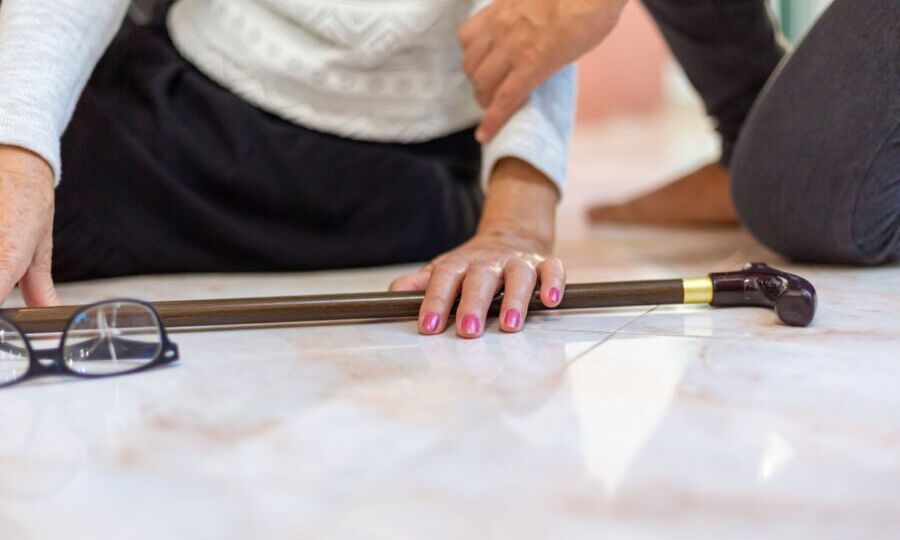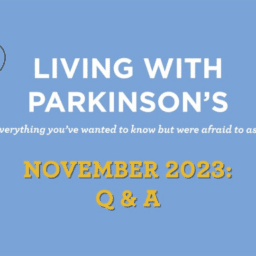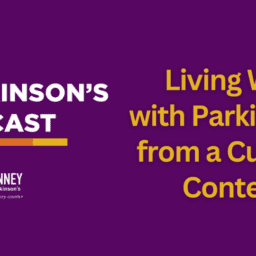In a recent webinar with Dr. Jay Alberts, the Vice Chair of Innovations of the Neurological Institute at the Cleveland Clinic, we discussed freezing of gait (FOG) and postural instability, as well as some exercises and therapies that can be helpful for addressing them. But what about retropulsion? This is a question that came up during and after that webinar, so we wanted to address it.
What is retropulsion?
If you have ever had trouble catching your balance, especially when you feel like you’re being pulled backward or when you must take a bunch of small steps to restore your balance, you have experienced retropulsion: the tendency to lose your balance by leaning backward.
Retropulsion can affect a number of activities of daily living, including getting out of a chair, turning around in a tight space, walking backward, or straightening up from being bent over. It is also a leading cause of falls for people with Parkinson’s. If you notice that you often lose your balance and fall backward, you should talk to your neurologist or physical therapist about retropulsion.
What causes retropulsion?
As a form of postural instability, retropulsion is caused by a combination of highly complicated factors. Researchers believe that the degeneration of dopaminergic neurons in people with Parkinson’s means that less dopamine is produced, leading to balance issues like retropulsion. Additionally, some people with Parkinson’s have comorbid white matter disease, which can also lead to unstable balance and difficulty recovering from backward stumbles. Degeneration of your cholinergic system, which is common with aging but pronounced in people with Parkinson’s, may also be involved. Finally, as we discussed during our webinar on postural instability, issues like dual tasking and anxiety can also make your retropulsion and likelihood of falling worse.
A common diagnostic tool that neurologists use to evaluate postural instability is called the retropulsion test. Your doctor will stand behind you and give a sudden, unexpected pull to your shoulder to see what your response is like. The more steps you take (and the smaller the steps), the more postural instability you may be experiencing. Your doctor can also use this test to look for other possible motor symptoms like freezing of gait. Unfortunately, a retropulsion test cannot effectively determine how likely you are to fall in the future, but the information about postural instability that it can provide will be very valuable for creating a treatment plan with your neurologist, physical therapist, and/or occupational therapist.
What kinds of exercises can help?
Talking to your physical or occupational therapist about strategies to address retropulsion can be helpful for reducing your chance of falling. Here are three exercises from the University of Florida Health and an occupational therapist you can do at home:
- Practice reaching up (like into a cabinet) with your feet staggered rather than parallel. Switch which foot is forward and backward between reach attempts to practice different positions that you can adopt in your daily life. Then, practice reaching down into lower cabinets with your feet staggered and returning to a standing position. Make sure to have something to hold onto or a care partner present during your first attempts to ensure you do not fall.
- Sit on a chair or bench, preferably one with a back to catch you in case you fall. Place a large ball on the ground in front of you between your feet. As you start standing up, reach down to pick up the ball and continue until you are standing fully with the ball held in front of you. Once you are standing upright with the ball in your hands, begin sitting back down and replacing the ball on the floor. Try to move slowly, leading with your hips rather than your trunk, and return to your seated position.
- If your balance is too unstable, you can modify #2. Take a long string or band (approximately the size of your wingspan) and tie an item to each end – this can be anything you have around the house that will weigh down the string but not be difficult to lift. Good ideas include a bottle of travel-sized shampoo, a sandal, an empty jar, or even a carabiner. Place the string around your neck and sit down in a chair with armrests. Plant your feet firmly on the ground, hold onto the armrests, and lean forward until the items tied to your string are touching the ground. Now that you are “nose over toes,” propel yourself up into a standing position. Return to your seated position when you are ready.
If retropulsion is a concern for you, or you have had falls due to it, consider working with a physical therapist in your area. They can help you build strength and body awareness to reduce your risk of falling.
You can search for a local Parkinson’s physical therapist here using the APTA’s “Find a PT” tool. Select “Neurology” under “Practice Focus” or “Find by Specialist”.
How are your feet?
Did you know that you can prolong your mobility and improve your balance by taking care of your feet? Dr. Atul Gawande’s book, Being Mortal, dives deep into why feet are a critical part of living well.
WANT MORE PRACTICAL ARTICLES LIKE THIS?
Much more can be found in our latest edition of the Davis Phinney Foundation’s Every Victory Counts® manual. It’s packed with up-to-date information about everything Parkinson’s. Request your copy of the Every Victory Counts manual by clicking the button below

















